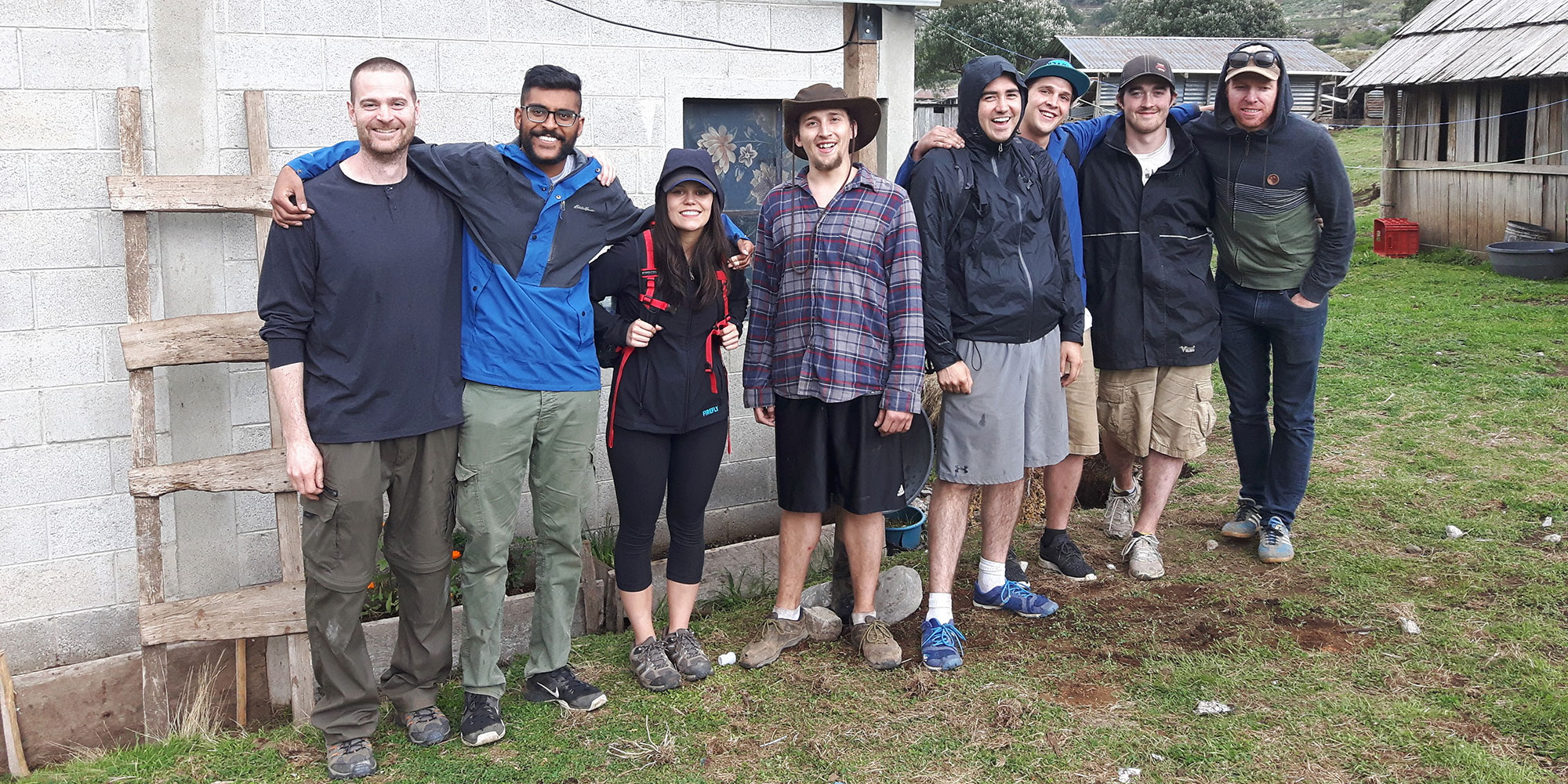Alternative Energy Technology program brightens futures in Todos Santos
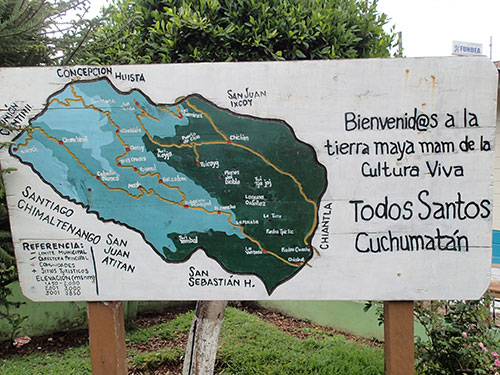 In the western highlands of Guatemala, where the days are bright but the nights are long, electricity can be scarce.
In the western highlands of Guatemala, where the days are bright but the nights are long, electricity can be scarce.
Once the sun sets – between 5:30 and 6:30 p.m. year-round – many families have nothing but kerosene lamps to light their homes. Some children study under streetlights, and people often have to walk to neighbours with electricity or other villages to charge their cellphones.
Power in these communities is often inefficient, expensive and – when it comes to kerosene – can be dangerous.
Last May, Alternative Energy Technology (AET) instructor Doug McFarlane and a crew of 7 student-volunteers from the program (and 1 from Marketing) spent 10 days in the Todos Santos region. Their goal: install solar photovoltaic systems in rural Mayan communities and train local people in the process, all while giving students an unforgettable learning experience.
The trip was organized by the Calgary-based non-profit Light up the World (LUTW), which had approached AET chair Jim Sandercock to help with the project. LUTW has fitted more than 350 systems in Guatemala since 2006 and has brought power to hundreds of people in Ecuador, Peru, Papua New Guinea and Costa Rica.
Installing even a simple system to power, for instance, a radio in Todos Santos came with challenges – not least of which was how to get there. “The drive from Guatemala City was only 257 kilometres but it took 9 hours,” says McFarlane (pictured at left at the bottom of page with the students). One day their truck got stuck in a rut so deep it was strung up in the air; another day the engine overheated.
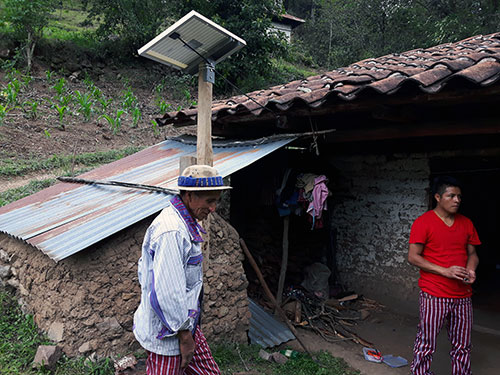
Solar: the source of choice
For such remote areas with little infrastructure and no power grid, solar is an ideal energy source. It provides good lighting while being virtually inexhaustible, not to mention improving interior air quality that might otherwise be compromised by light sources such as kerosene, wood or even candles – all of which produce toxins that can damage health.
“We were installing simple but robust systems that wouldn’t require much maintenance and wouldn’t break down,” McFarlane explains. “Solar PV is generally very durable and requires little, if any, maintenance. It can last up to 25 years without much work at all.”
Few other energy sources, he says, can work on such a small scale. The units put out a fraction of the energy of those in the developed world, where a single solar module might produce 300 watts, but they still generate enough power for lighting.
McFarlane’s crew started at a primary school, drilling holes in walls to run wires and building an electrical box to create a 100-watt system. In nearby villages, they built smaller units in 5 homes, with residents contributing sweat equity, money or materials.
The long-term success of the project depends on forging relationships between post-secondary institutions, the local non-profit organization and people who benefit from it, says LUTW’s Christoph Schultz.
“The main challenge is sustainability: How can we set up the systems to make sure the lights stay on into the future?”
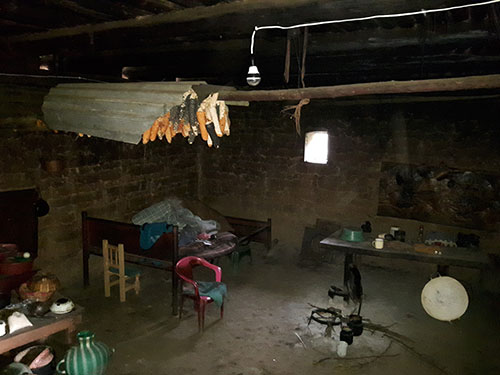 Achieving true sustainability
Achieving true sustainability
LUTW’s goal is to connect families with the organization’s Guatemalan non-profit partner, Institución Mam de Desarrollo Integral (IMDI), to help facilitate, for instance, links to suppliers of replacement parts. Training local people to maintain and install systems is crucial so that once NAIT and LUTW leave, local people can maintain their systems.
“Sustainability is critical and not straightforward,” says Schultz. The payoff takes time, but it does come. This year, IMDI installed several systems on its own.
While keeping the lights on requires an ongoing commitment from its beneficiaries, the impact is immediate and indisputable. More affluent people in the area, McFarlane explains, live in homes made of concrete blocks that had some windows.
“But a lot of homes are adobe, with dirt floors and tiny windows. Even in the middle of the day it is dark inside,” he says.
Something as simple as indoor light could help those in the less developed area of Todos Santos do work or run shops out of their homes. Schultz notes that many children in the area are expected to do chores after school that require daylight. A simple solar photovoltaic system can open up evening hours to finish homework.
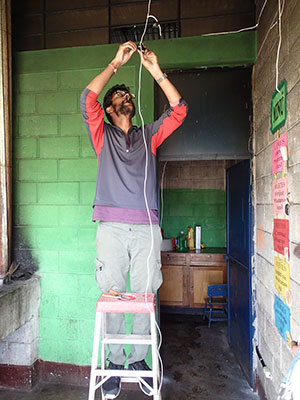 A smile says it all
A smile says it all
The impact the trip had on NAIT students was also profound. Ronak Patel (left), who is starting his second year in AET, was excited about seeing a new place, trying new foods and experiencing a different culture. But he says his goal was also to improve the quality of another person’s life.
“Being able to see how some people lived without electricity was a unique personal lesson,” he says. “It’s something we take for granted back home.”
The local community speaks Mam, and the group relied on translators to communicate. “There is the universal understanding of seeing someone’s smile grow as they turn on the light switch for the first time,” says Patel.
“Most of the installations finished in handshakes, hugs and smiles all around.”
Not to mention the occasional soccer game. One day, they took a break to play with neighbourhood kids. “There were about 30 of them, and they killed us,” McFarlane says. “They beat us about 50 to 5.”
McFarlane’s team aren’t likely to see a rematch, but there could be friendly soccer games elsewhere. He hopes NAIT can be involved in future projects with LUTW – perhaps in Peru.
Involving post-secondary institutions to develop the program is key: Schultz notes that collaborating with NAIT helps his organization reach more communities, and creates awareness about access to energy for students and the public back home. This year, it’s been a success.
As Patel puts it: “Seeing how much impact a single solar panel and 4 lightbulbs had on a person is something I’ll always remember.”
